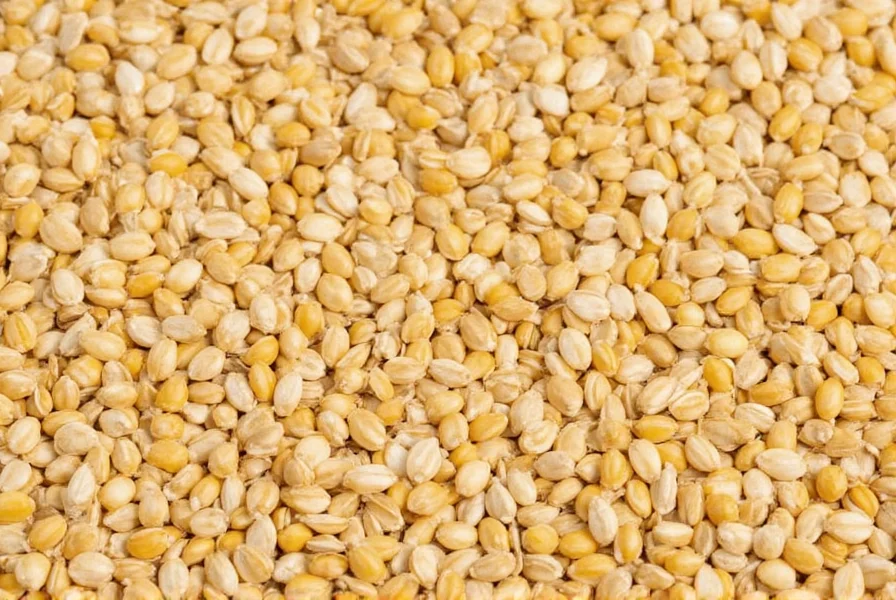When examining what do sesame seeds look like up close, you'll notice their distinctive flattened oval shape with one rounded end and one tapered point. These ancient oilseeds have been cultivated for over 5,000 years and maintain remarkably consistent physical characteristics across varieties.
Physical Characteristics of Sesame Seeds
Understanding how to identify sesame seeds requires attention to several key visual elements. Each seed resembles a miniature teardrop, typically ranging from 3-4 millimeters in length—about the size of a lowercase "o" in standard 12-point font. Their smooth, shiny surface reflects light differently based on color variety and whether they've been hulled.
Color Varieties and Visual Differences
The most common question about what raw sesame seeds look like involves their color variations. Here's how to distinguish between types:
| Type | Color Description | Size (mm) | Visual Characteristics |
|---|---|---|---|
| White/Cream | Ivory to pale yellow | 3-4 | Hulled seeds with uniform light color, slightly translucent when held to light |
| Golden | Light amber to golden brown | 3-4 | Natural unhulled variety, slightly darker than white seeds |
| Black | Deep charcoal to true black | 2.5-3.5 | Smaller than white varieties, glossy surface, often with subtle purple undertones |
Texture and Surface Details
When exploring what sesame seeds look like under magnification, you'll notice their smooth, almost waxy surface texture. Hulled white sesame seeds have a uniform appearance, while unhulled varieties (including most black sesame seeds) display a distinctive pitted surface pattern visible under close inspection. Black sesame seeds often appear more angular than their white counterparts.
Properly stored sesame seeds maintain their shape and don't clump together. Fresh seeds have a slight sheen, while older seeds may appear duller. When pressed between fingers, they feel hard and brittle rather than soft or oily.
Size Comparison for Better Understanding
Many people wonder how big are sesame seeds compared to other common items. To visualize their scale:
- Approximately 1/8 the size of a standard rice grain
- Similar width to a grain of fine sand
- About the same length as a lowercase "i" dot
- Twenty seeds lined up would span roughly 3 inches
Common Misidentifications
When learning how to tell sesame seeds apart from similar-looking seeds, note these distinguishing features:
- Poppy seeds are smaller (about 1mm), more rounded, and typically blue-gray rather than beige or black
- Chia seeds are larger (2-3mm but wider), have a mottled appearance, and develop a gelatinous coating when wet
- Nigella seeds (black onion seeds) are matte black, triangular, and have a distinctive ridged surface
Visual Changes During Processing
Understanding what sesame seeds look like before and after processing helps identify quality:
- Raw unhulled: Seeds retain natural color with visible hull texture
- Hulled: White varieties lose outer layer, becoming uniformly pale
- Toasted: Develop golden brown coloration, especially at tapered ends
- Rancid: May appear discolored with dark spots or oily sheen

Practical Identification Tips
When examining what do real sesame seeds look like versus imitations, look for these authentic characteristics:
- Consistent oval shape across the batch
- Uniform color within variety (some natural variation is normal)
- No visible debris or foreign particles in quality batches
- Dry, non-sticky texture when properly stored
For culinary applications, recognizing what sesame seeds look like when properly toasted is essential—they develop a light golden color while maintaining their shape, never becoming completely brown or black unless burnt.

Seasonal and Regional Appearance Variations
While the fundamental appearance remains consistent, what sesame seeds look like can vary slightly based on growing conditions:
- Indian varieties often have a golden hue even when hulled
- Ethiopian black sesame seeds tend to be slightly larger
- Chinese black sesame seeds typically have the deepest color
- Harvest time affects moisture content and slight color variations
Frequently Asked Questions
What do sesame seeds look like when they're fresh versus old?
Fresh sesame seeds have a uniform color and smooth, slightly shiny surface. Old or stale seeds appear duller, may develop dark spots, and sometimes show signs of oil separation. Properly stored fresh seeds maintain their shape without becoming brittle or crumbling.
How can you tell the difference between white and black sesame seeds by appearance?
White sesame seeds are ivory to pale yellow, measure 3-4mm, and have a uniform, slightly translucent appearance when held to light. Black sesame seeds are smaller (2.5-3.5mm), have a deep charcoal to true black color with possible purple undertones, and typically retain their natural hull giving them a more textured surface.
What do sesame seeds look like before they're harvested?
Before harvesting, sesame seeds remain enclosed in triangular seed pods that turn brown when mature. The seeds themselves are already fully formed inside these pods, maintaining their characteristic oval shape and color specific to the variety. When the pods dry completely, they split open naturally to release the seeds.
Do sesame seeds look different when they're soaked or cooked?
Yes, sesame seeds undergo visible changes when processed. Soaked seeds become slightly plumper and more translucent, especially white varieties. When toasted, they develop a golden brown coloration starting at the tapered ends while maintaining their oval shape. Black sesame seeds darken further when cooked but retain their distinctive color.
What do sesame seed shells look like?
Sesame seed shells (hulls) are thin, papery coverings that match the seed's color—light beige for white varieties and dark brown to black for darker seeds. When removed during hulling, the shells appear as delicate fragments. Unhulled seeds show the shell as a slightly textured surface with tiny pits visible under magnification.











 浙公网安备
33010002000092号
浙公网安备
33010002000092号 浙B2-20120091-4
浙B2-20120091-4